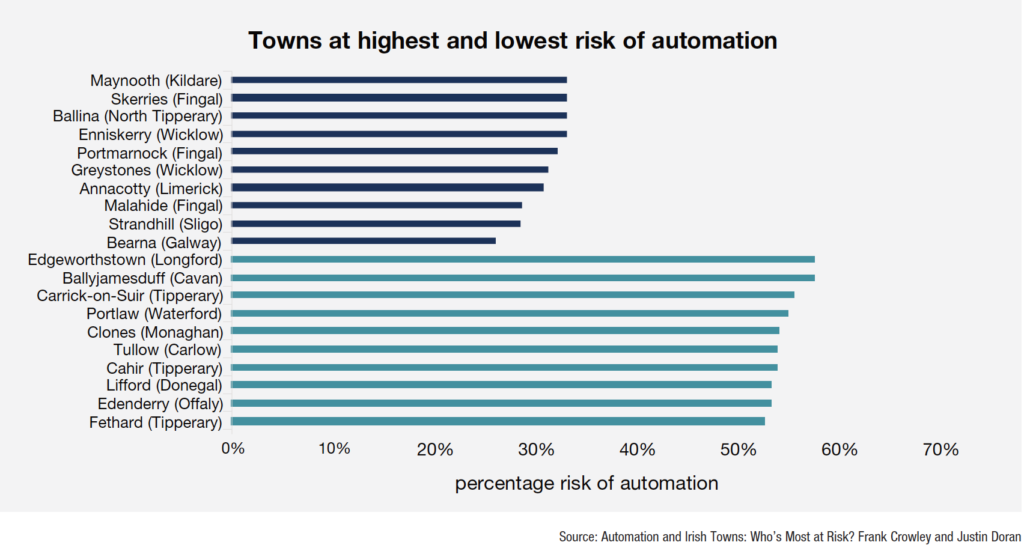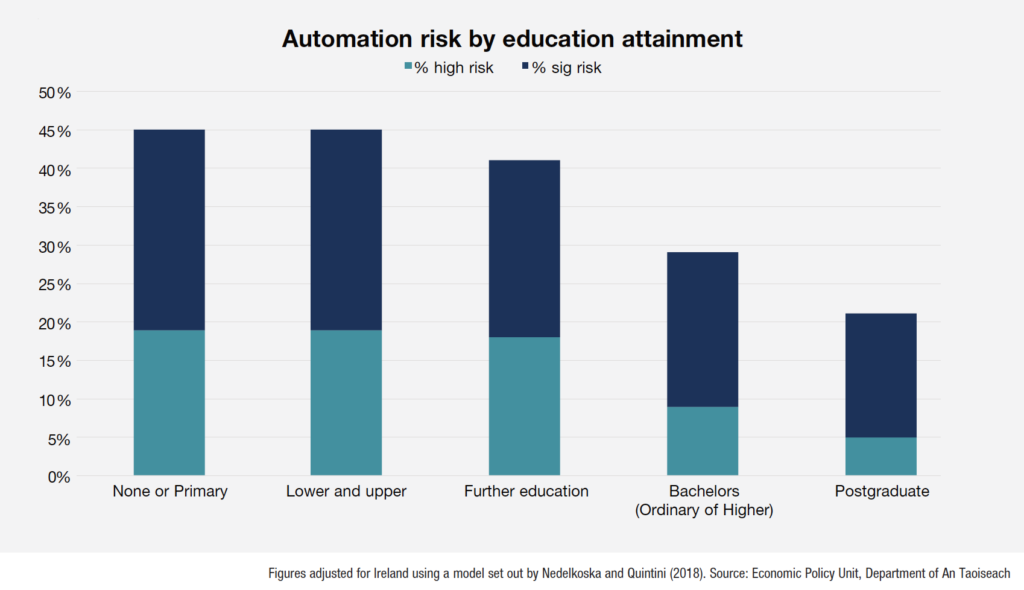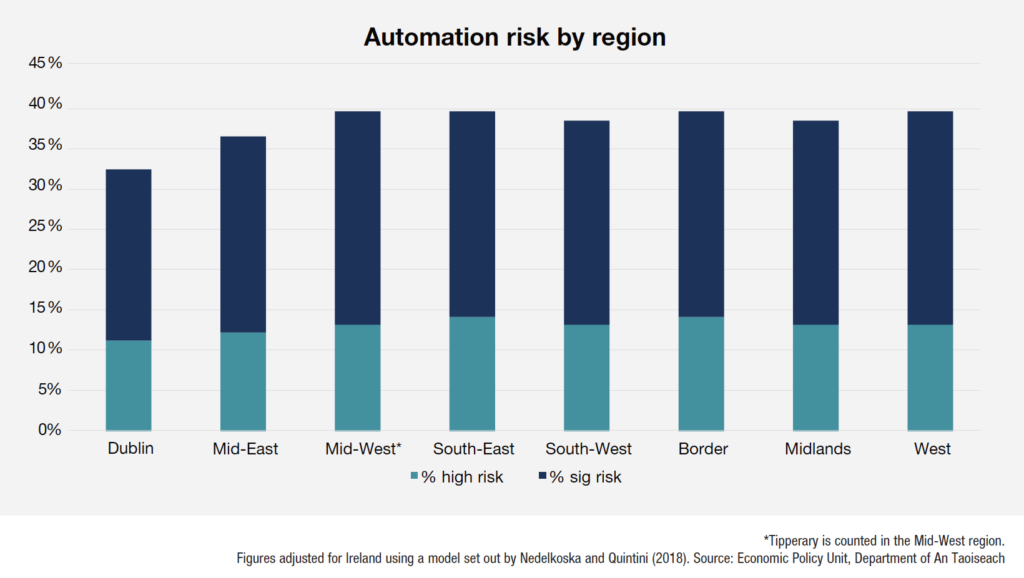The risks of job automation

In April 2018, a technical report compiled by the Department of An Taoiseach estimated that two in every five jobs in Ireland were at risk from automation. On the back of the report, a pair of Cork academics have analysed the local impact across Irish towns.
The 2018 report A Comparative Analysis of the Impact of Automation on Occupations in Ireland, found a continuing correlation between high risks of automation and areas of greatest economic exposure. Specifically, the report pointed to a strong relationship between the risk of automation of occupations and the level of education of people in those occupations.
The standout figure from the report was the declaration that two out of every five jobs in Ireland are likely to be substantially impacted by automation, with a further breakdown that 15.3 per cent of jobs were at high-risk and 25.5 per cent at significant risk.
Sector analysis highlights over half of the employment in transportation and storage; agriculture, forestry and fishing; wholesale and retail; and construction are facing risk of automation of 50 per cent or higher, with agriculture, forestry and fishing being identified as the sector with the largest high-risk exposure. Education; human health and social work activities; and information and communication were identified as the areas of least exposure.
In terms of regions, the South-East and the Border areas were the areas with the highest risk profile, while Dublin had the lowest levels of risk. The research findings encouraged academics from the Spatial and Regional Economic Research Centre at University College Cork to analyse further the sub-national geographical implications of automation risk.

“The current literature is insufficient to inform policymaking at a disaggregated level that can assist national and local policymakers to make meaningful local intervention decisions across space in cities, towns, villages and rural areas. There is an absence of an accurate picture of the local automation job risk,” the report states.
Looking at 200 towns of Ireland with a population of 1,500 or more, the report finds a wide-ranging level of exposure from lows of 26 per cent in Bearna to highs of 58 per cent in Edgeworthstown, relative to a 44 per cent average proportion of jobs at high risk across Irish urban areas.


Identifying a hierarchy of spatial disparities including:
- high risk towns near high risk towns;
- isolated high risk towns;
- isolated low risk towns; and
- low risk towns near low risk towns.
The report indicates the complications these findings pose to policy options, suggesting the unsuitability of a one size fits all approach and highlighting the probability that nearby towns could in the longterm be affected by those areas at highest risk.
As well as suggesting the need for coordinated regional and local strategies, the report indicates the need to address industry exposures link to automation exposure. Highlighting that towns reliant on agriculture and manufacturing will be the most disrupted by technology, it suggests leveraging the local knowledge base to create higher added value jobs. As an example, it suggests that while agriculture has a high exposure rate, it is closely tied to areas of innovation such as tourism and agri-food, which are less exposed.
Finally, the report indicates the need to address the risk of automation at source. Highlighting the correlation between automation risk and education levels, age demographics and town size. “The key barriers to unlocking local competencies in peripheral towns will be to curb the brain drain by making skills development and education more financially accessible and remotely possible,” it states.
Future jobs
Recently the Government unveiled plans to combat the emerging threat to jobs, warning that technology and automation will make some jobs disappear entirely and pose an uncertain future for some companies. Future Jobs Ireland 2019 identifies five pillars of focus:
- embracing innovation and technological change;
- improving SME productivity;
- enhancing skills and developing and attracting talent;
- increasing participation in the labour force; and
- transitioning to a low carbon economy.
While all of the pillars have elements encompassing adjustments for the emergence of technology and automation in the labour market, the first pillar sets out ambitions to:
- position Ireland as a leading pioneer in technology adoption by investing in demonstrator sites and developing enabling frameworks and standards;
- implement a strategic approach to maximise the benefits from digitalisation;
- position the public service to be a leader in technology adoption and innovation;
- establish top teams to realise opportunities presented by technological changes and the move to a low carbon economy;
- increase the capacity of SMEs to engage in research, development and innovation;
- incentivise SMEs to invest in new technologies; and
- develop transition teams to assist workers and sectors likely to be most challenged by our changing economy.
Listed amongst the deliverables of these ambitions is a move to: “Develop our knowledge of the impact of economic transition on vulnerable workers and sectors with a view to developing a strategy for transition teams to support such workers”. Future Jobs Ireland will target a significant increase in expenditure on research and development intensity from 1.4 per cent to 2.5 per cent of GNP by 2025 and also aims to increase in the share of SMEs introducing product or process innovations and with marketing or organisational innovations.





